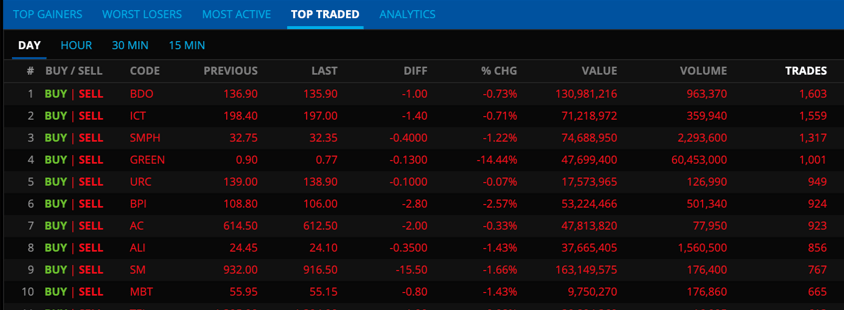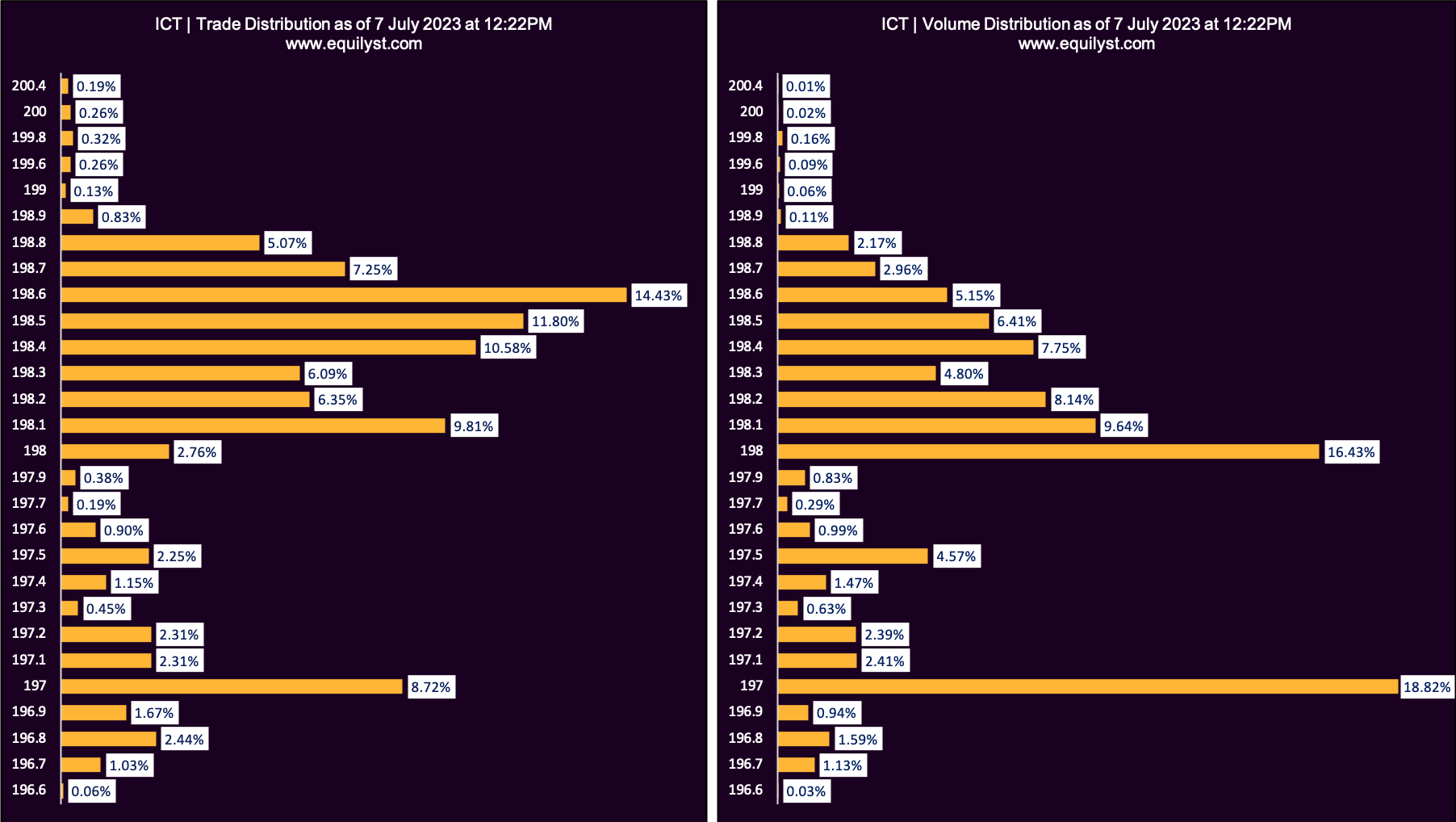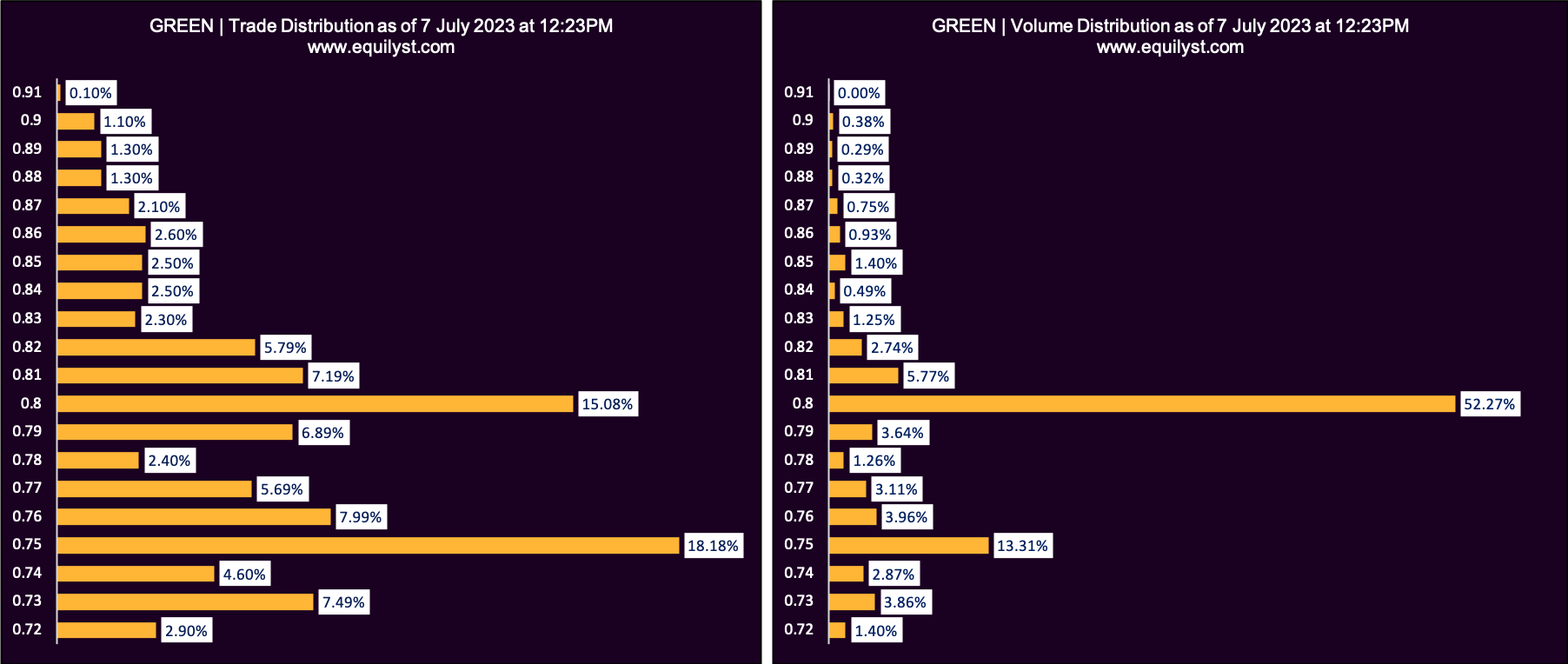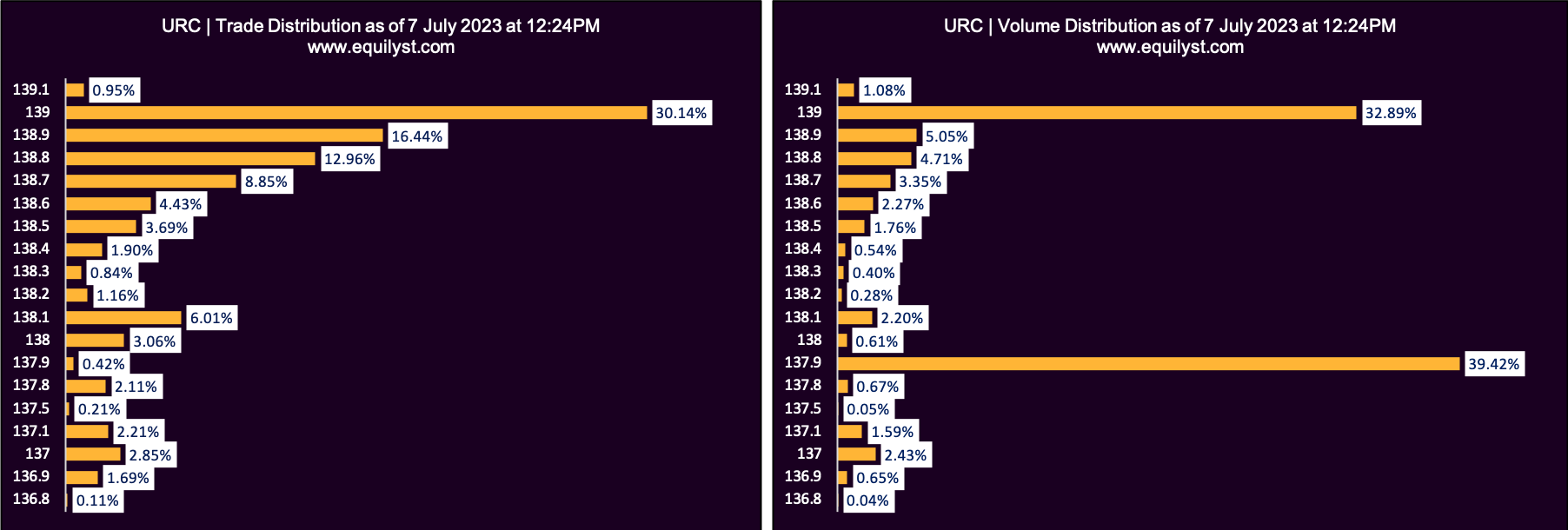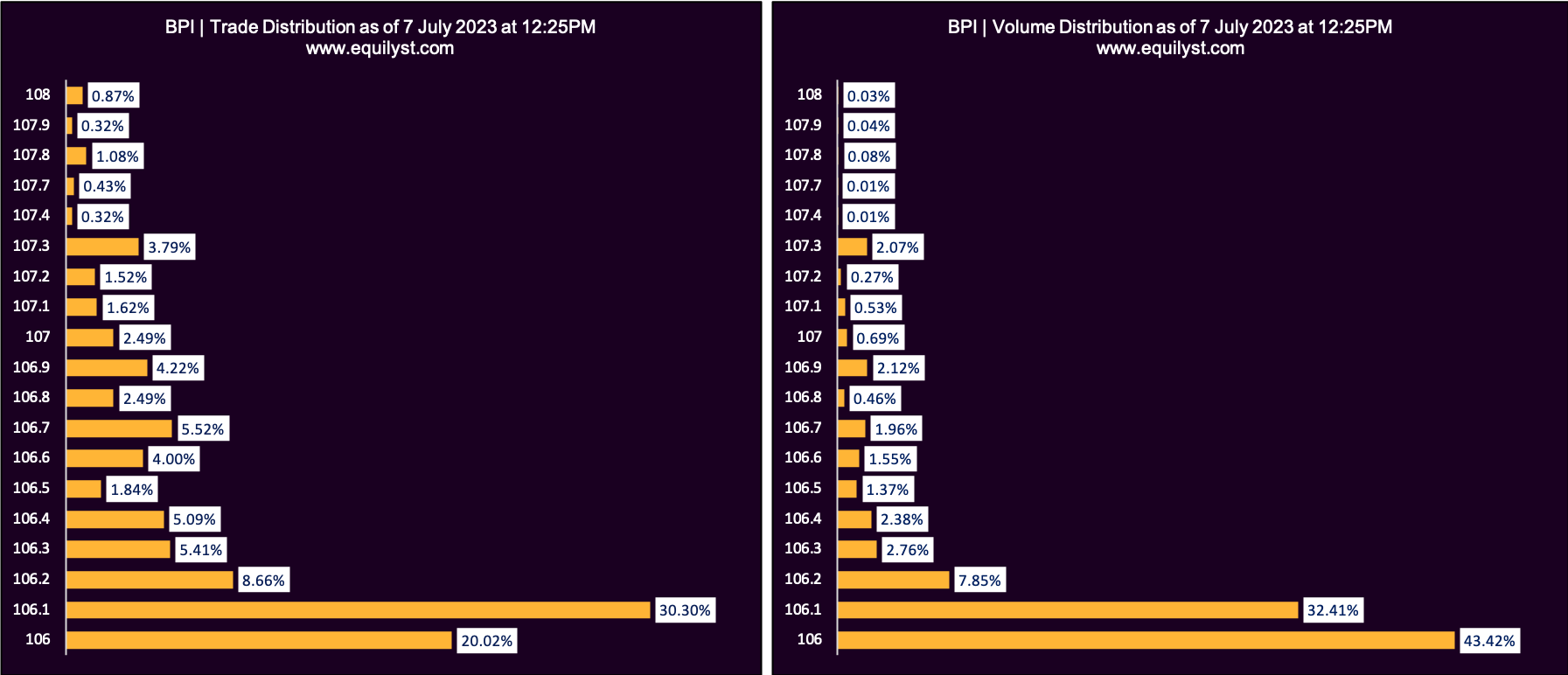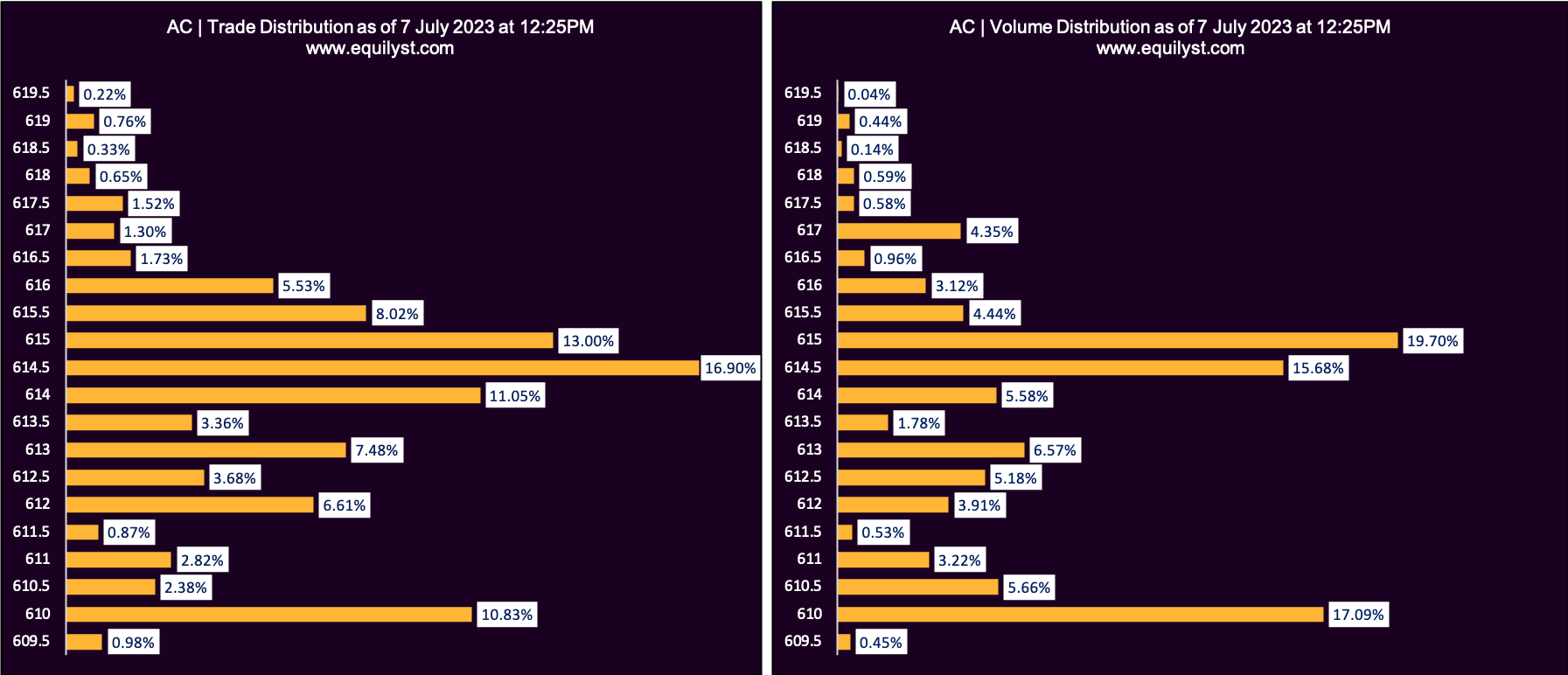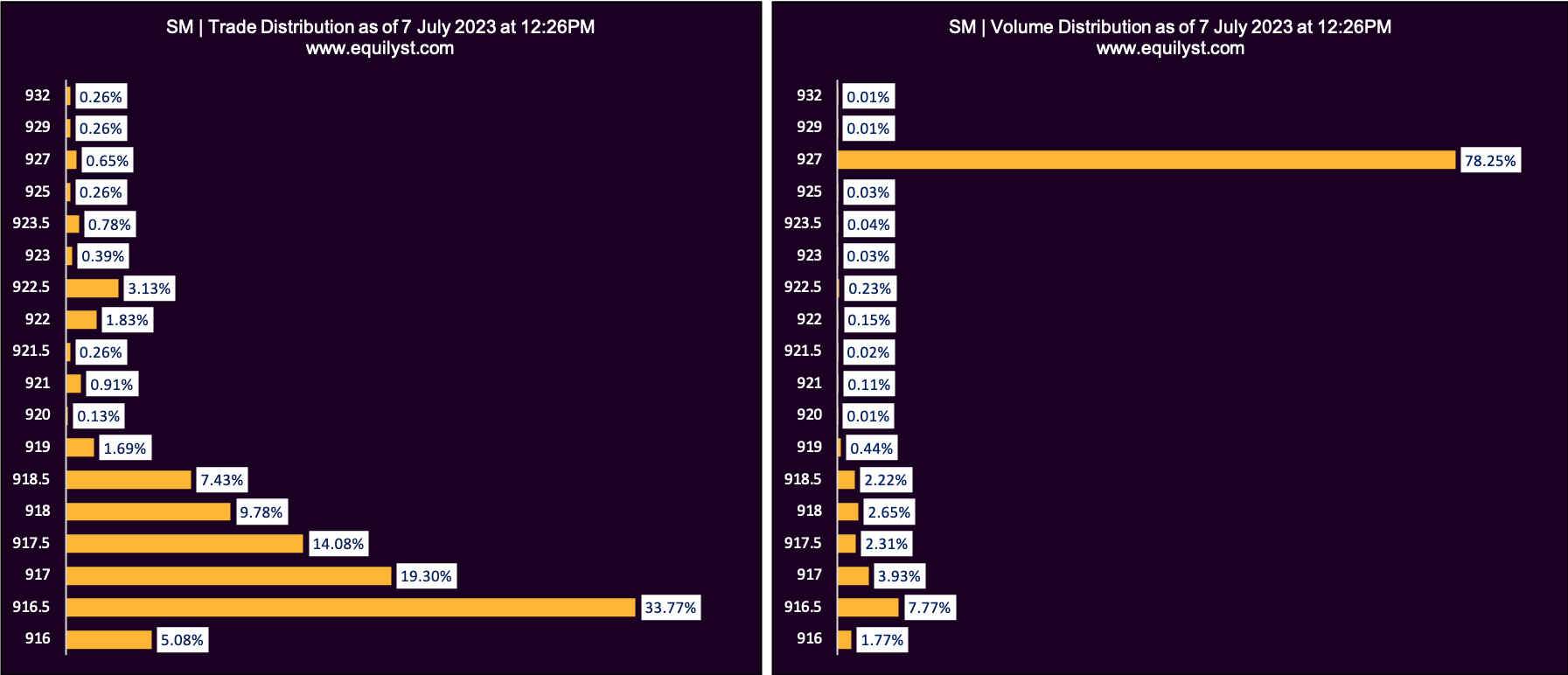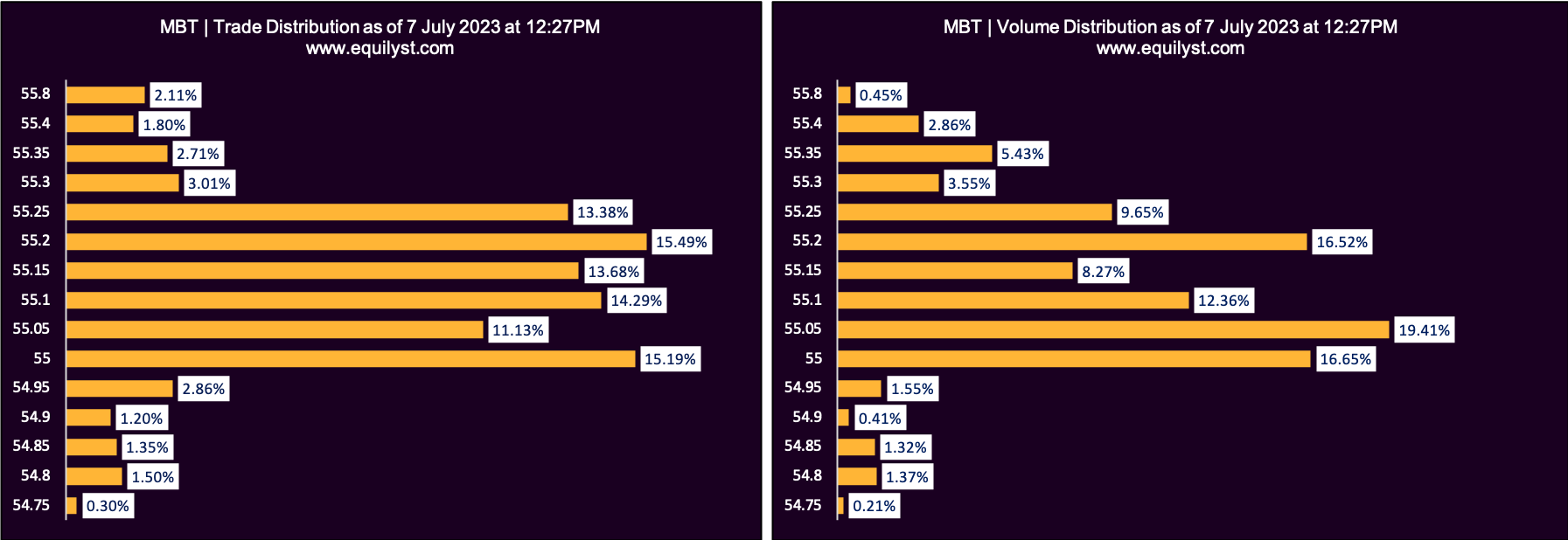How and Why Do I Do Trade-Volume Analysis
In this complimentary report, I am pleased to share the price ranges with the biggest volume and highest number of trades for the stocks mentioned below. These are the price ranges you need to watch out for in the second half of today’s trading.
Trade and volume analysis helps me determine optimal price levels for buying and selling securities. At Equilyst Analytics, I use a specific approach known as Dominant Range analysis, which focuses on two key aspects: trades and volume.
When conducting trade and volume analysis, I assess the position of the volume-weighted average price (VWAP) in relation to the current price. Additionally, I consider the position of the dominant range relative to the intraday high and low.
The dominant range refers to the price range characterized by the highest trading volume and the greatest number of trades. By examining the proximity of the dominant range to the intraday high and low, I gain insights into the interest of participating traders and investors in pushing the price higher.
To gauge the level of optimism among participants regarding buying the stock at a higher price, I analyze whether the current price exceeds the VWAP or if the VWAP falls within the dominant range, particularly closer to the intraday high than the intraday low.
Achieving a sense of balance or equilibrium between the number of trades and volume at each price level is essential. This equilibrium is evaluated in relation to the individual distribution of trades and volume within each group.
The culmination of this analysis is the development of my proprietary Dominant Range Index, which encapsulates the statuses of the elements I have encoded. By leveraging my algorithm’s processing capabilities, the Dominant Range Index can yield a bullish or bearish rating.
As the fifth component of my 6-indicator Evergreen Strategy When Trading and Investing in the Philippine Stock Market, the Dominant Range Index applies the Nash Equilibrium effect, a theory that holds considerable value in my capacity as a computer scientist and professional stock market analyst.
While the technical description of this functionality may seem intricate, I have simplified it by assigning an overall bullish or bearish rating to the Dominant Range analysis. A bullish rating implies an upward price movement is likely, while a bearish rating indicates the opposite.
BDO
Dominant Range Index: BULLISH
Last Price: 135.9
VWAP: 135.96
Dominant Range: 136 – 136.1
ICT
Dominant Range Index: BEARISH
Last Price: 197
VWAP: 197.86
Dominant Range: 197 – 198.6
SMPH
Dominant Range Index: BEARISH
Last Price: 32.35
VWAP: 32.56
Dominant Range: 32.45 – 32.5
GREEN
Dominant Range Index: BEARISH
Last Price: 0.77
VWAP: 0.79
Dominant Range: 0.75 – 0.8
URC
Dominant Range Index: BULLISH
Last Price: 138.9
VWAP: 138.39
Dominant Range: 137.9 – 139
BPI
Dominant Range Index: BEARISH
Last Price: 106
VWAP: 106.16
Dominant Range: 106 – 106.1
AC
Dominant Range Index: BULLISH
Last Price: 612.5
VWAP: 613.39
Dominant Range: 614.5 – 615
ALI
Dominant Range Index: BEARISH
Last Price: 24.1
VWAP: 24.14
Dominant Range: 24.15 – 24.2
SM
Dominant Range Index: BEARISH
Last Price: 916.5
VWAP: 924.88
Dominant Range: 916.5 – 927
MBT
Dominant Range Index: BULLISH
Last Price: 55.15
VWAP: 55.13
Dominant Range: 55.05 – 55.2
Do You Need Help Trading or Investing on Stocks Mentioned in this Report?
Fix and rebalance your stock portfolio for optimal returns through our Stock Portfolio Rehabilitation Program.
Be a TITANIUM client to learn how to preserve capital, protect gains, and prevent unbearable losses when trading and investing in the Philippine stock market.
Be a PLATINUM client to request our in-depth technical analysis with recommendations tailored-it to your entry price, average cost, buy case, and risk tolerance.
Be a GOLD client to have a teleconsultation with us over the phone as trading happens.
- Key Prices for PH Bluechip Stocks 30% Above 52-Week Low - June 4, 2024
- May 2024 Market Sentiment Rating of 30 PH Bluechip Stocks - June 3, 2024
- EquiTalks: ICT, BPI, AEV Updates – 5.29.2024 - May 29, 2024


